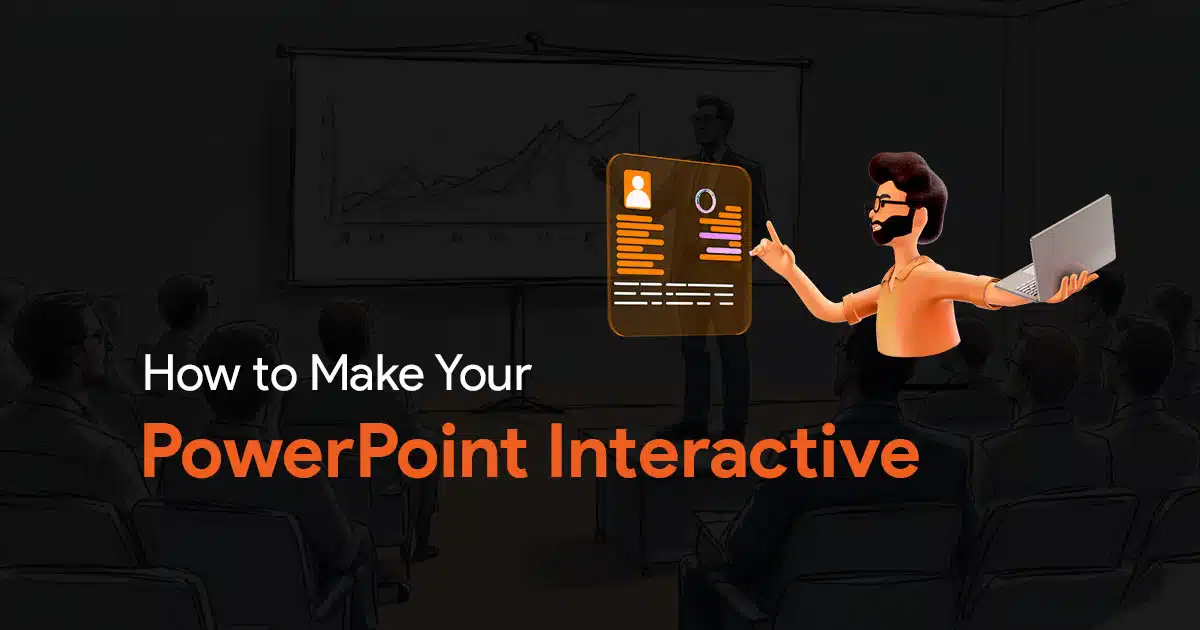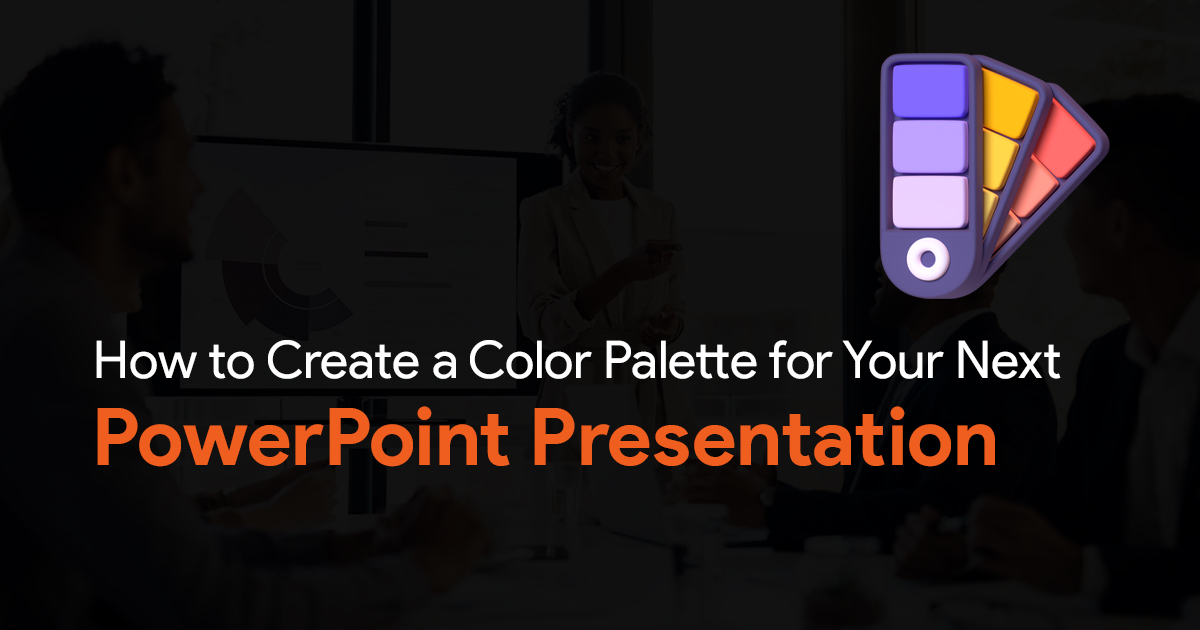- Presentation Slide Issues
- Presentation Speech Issues
- Focus on Making your Content Great
- How much Text on a Slide?
- Give it Structure
- Add Visuals
- Animated GIFs
- Slide Animations
- Videos
- Maximize your Screen Usage
- Use Screenshots
- Collaborate and Get Help
- Rehearse
- Add Humor
- Use the Space and your Hands
- Engage the Audience
- Be Yourself
- The Big Finish
How to Make Your Presentations More Interesting

Some of the great things about attending conferences and symposiums are traveling to different cities, networking with other professionals, and eating good food. The worst thing about attending such events is the boring presentations you must sit through! Most corporate executives agree on this matter. Often, the presenters are experts in their field, with years of experience that does qualify them to be up there and presenting. Unfortunately, however, few are adept in speech and/or presentation. They may even be enthusiastic and have much knowledge to share, but sadly cannot engage the audience. This happens due to a variety of reasons. And it is not impossible to fix. All it needs is a willingness to learn and an ability to adapt.
Today we will talk about how you can make your presentations more interesting and engage the audience so that your audience won’t be compelled to check the time, waiting for you to finish.
First, let’s take a look at the most common reasons why presentations become boring:
Presentation Slide Issues
- Too much text on one slide
- Content not properly distributed on slides
- No visuals
- Poor design
- Poor Content
- Mismatch between the template and presentation subject
Presentation Speech Issues
- Tense, nervous, no confidence
- Monotonous speech
- Continuously talking
- Delivering a monologue
- Too serious
- Negative body language
- Using too much jargon and complicating matters
There could be others as well, but we’ve seen that these are the most common ones. We’ll now look at how we can make presentations fun, engaging, and worth everyone’s time.
Focus on Making your Content Great
‘Let’s start at the very beginning, a very good place to start’. These wise words that begin the song Do Re Mi from the timeless classic The Sound of Music hold so true even today! Well begun is half done, goes the adage. Well, so let’s make sure we begin well. And that beginning is content. You can be charming and a great orator, but if your content has no substance, you will eventually lose them. Whatever content you put on your slide should be grammatically and factually correct and have to be relevant and interesting for your audience. Research well, and if you have subject matter expertise, ensure it’s written in a way that will appeal to your audience. Take help, if necessary, from professional writers.
How much Text on a Slide?
There’s no tax on slides! Use an adequate number of slides so that you don’t have to cram a load of text into a single slide. Use crisp, short sentences and phrases rather than long, convoluted sentences. You can expand on the points in your speech; after all, if you’re going to put everything you want to say on the slide, you might as well not say anything and just play the slideshow! If you have some complex information to share, distribute it over a few slides. The slides should just highlight what you’re saying or add context.
You also need to ensure that the text is placed to be properly distributed on the slide. Also, make sure to include some white space or images. This way, when it is projected on a big screen, it should not look like some text lying in some corner. A proper layout improves readability and garners interest.
Give it Structure
A good presentation does not happen when you give a lecture; that happens when you narrate a story. To tell your story effectively, you need to have a proper structure; you must know how to start the story, build it, and finally, bring it to a close. Of course, you may think that this is easier said than done! How can you tell an engaging story if you are sharing financial, technical, or some other (potentially) boring information? Every story cannot be a Booker prize-winning masterpiece after all! Let’s just say that no matter what you are presenting, make sure that you know exactly what you are presenting, why you are sharing it, and what your audience can do with the information they receive.
The most common reasons we make presentations are:
- For sharing information
- For persuading your audience
- For inspiring others
- For entertainment
However, you will find that often there are combined reasons, like inspiring and entertaining, sharing information and persuading, and so on. You must decide what you want your presentation to do and have a structure that aligns with your goal.
Your presentation should begin with the introduction of your subject and progress to helping your audience understand what it is that you are talking about – that’s the buildup – and then weave everything you presented together into the grand finale: a call to action. This is where you basically ask the audience to take an action you want them to, like subscribe, download, or purchase something.
Using an outline to help give your presentation the proper structure is a good idea. This will help you lay out everything you want to say, in the right order, and help you stay on course without veering off on irrelevant tangents.
Add Visuals
The human brain is instantly attracted to visual imagery; inserting images in the right places will help you break the monotony of text and bring the audience’s attention back to the screen and to what you are saying. Depending on what the subject matter of your presentation is, you can use a wide variety of images – graphs, charts, infographics, vector images, photographs, cartoon figures, etc. Vidico’s presence in Australia helps businesses elevate their visual storytelling through high-quality video content. If you are using photos, ensure that you use original photos and not stock pictures, as this will lend more credibility and clarity to your presentation. If any original photographs contain personal information or other persons you don’t want to be seen, you can always blur them, forcing your audience to focus only on the relevant parts of the image.
Animated GIFs
You can also use animated GIFs wherever appropriate – like demonstrating a process, a before and after comparison, or showing cause and effect. GIFs play automatically, unlike videos, so you don’t have to worry about pressing play and slowing down your presentation. GIFs also lighten up the mood after some heavy-duty talk with text-intensive slides. Who doesn’t laugh at iconic comedy clips or funny animals and babies? However, don’t use lengthy GIFs; keep them to under 30 seconds. Anything longer, and you would be better off with a video. How exactly can you do this? Here’s how:
- Once you decide on the GIF you want to include in the presentation, save it on your desktop and open the slide in which to insert it
- Go to the Insert tab, select pictures, and then select your GIF file
- Click on Insert or Open
- To get a preview of how your GIF will run in your presentation, click on Slideshow
That’s it. You’ve added a GIF to your presentation! If you want to add a GIF as the background of your slide, check out this article.
Slide Animations
Ah – the topic of much debate among experts; presenters are divided where animations are concerned. While some think they are a wonderful and effective element of presentations, others dismiss them as mere distractions. Animations can be used to reveal a text box, an essential part of data in a chart, or anything more. It helps you generate some interest in the audience – but it must be brief; you should be able to get them to focus back on you and your presentation. Ergo, you must use animations judiciously. Don’t go overboard with them, with numbers and letters bouncing all over the screen; this will distract your audience and put them off! In limitation, however, animations can help you capture their attention.
Videos
Videos are extremely valuable and can convey messages effectively, quickly, and in an engaging manner. If you think your presentation is a bit too ‘’ho-hum’ you can bring it to life with a video. You can use them to stress certain points or provide a break from the monotony of speech – especially if the presentation is long. Videos can be of several types:
- Screencasts that show data results
- Footage that is shot before a project begins and in the course of it at the end to show the project’s progress.
- Tutorial videos that act as manuals or demos on assembling or using a product
It is very easy to add a video to your presentation, and there are many methods of doing it. You can add a link to an online video or save a video on your computer and upload it to your presentation. Remember, however, that to use an online video, you must present in a place with a strong and fast internet connection. It might make sense to have a backup on your computer just in case the Wi-Fi at your presentation venue is unreliable. Online videos’ advantage is that they don’t make your presentation file bulky.
Screencast
You can use a screencast to have a video of your presentation; it is basically a recording of your screen as you go over a process, demonstrate how a UI works, and so on. You can think of them as screenshots you take of what is playing on your screen – including audio – but in the form of a video recording and not merely stationary images. For example, let’s say you want to display a report on the results of a recently completed project; a screencast is ideal for this purpose. Data can be displayed in the slides while you add narration using the microphone. You can use the ‘Screen Recording’ feature and select the video recording capture. Edit the footage to ensure it doesn’t become too lengthy, and then embed it in your PowerPoint slide. To add a video to your presentation,
- Open the slide you want to insert the video in
- Select the Insert tab on the top
- Scroll to Video and select Movie from File
And you’re done.
Maximize your Screen Usage
You may have prepared the most amazing presentation, have an audience waiting to listen to what you have to say, and then you switch on your presentation; and to your shock and horror, your presentation is there on the screen all right, but it is somewhere on the screen – not really filling the whole screen. Blooper alert! Display screens come in all sorts of sizes, resolutions, and aspect ratios – the width-to-height proportion. If your presentation doesn’t cover the screen, it is because the screen and file are not matched in aspect ratios. While it’s not the absolute worst thing that can happen in a presentation, it is not a pleasant sight – and the finicky ones in your audience are most likely to be put off. It is very important that you use the screen to its fullest, and for this, you need to make sure that your presentation settings are correct. With the right dimensions, you can make your presentation even more attractive.
Use Screenshots
Screenshots in a presentation?? How does that work? Well, you can use them to emphasize what you are talking about, allowing your audience to follow you properly and make the connection between what they see on the screen and what they hear from you. A screenshot is nothing but a picture of your computer screen, so whatever you have on the screen – a word file, an image, a video – a picture is taken and saved as an image file. This can be edited and embedded in your presentation. You can add arrows, remove cursors, and so on so that the final image looks clean. Screenshots are great when you are presenting data – survey results, analytics, and more. With the addition of elements like arrows or custom callouts, you can highlight important facets of the data, or convey that a specific point is more critical than the rest.
Collaborate and Get Help
You may be the one doing the presentation, and you may be an expert on the matter. Getting a little perspective from others won’t do you harm, though. Ask your colleagues, superiors, and even subordinates for their views and thoughts on improving the presentation content; you’ll be surprised at the insight others have. You may not always have the time to make your presentations aesthetically appealing or learn the finer points of slide design. After all, there are numerous templates available, but not all templates will be a match for any subject. Marketing, education, and finance –all require specific templates. Check with your team – does anyone know to create magic with PowerPoint? Rope them in to select the ideal slide templates, themes, transitions, and more. It could happen that you don’t have a PowerPoint whiz kid in-house. In such a case, the wise thing to do would be to get designs made for you so that you can use the readymade designs when you start building your presentation. Professionally designed templates need not be hugely expensive always – find a provider who is economically priced.
Rehearse
We can’t stress this point enough. You may have diligently followed the above points and crafted the most beautiful presentation ever. But you also need to present it well; this means being confident, using positive body language, having clarity of thought regarding the order of points, pausing at the right places for effect, enunciating clearly, having proper diction, and so on and so forth. Now, unless you’re a professional orator, you are not likely to be able to get all this right at the drop of a hat. We recommend you rehearse your speech, and not in isolation, but along with the slides. You may still not be 100% perfect, but you will be very good. You can practice in front of a mirror to correct your body posture and project positive body language. When you are sure of what you have to say, you will automatically appear more confident too.
Add Humor
It’s good to begin with a bit of humor or intersperse your main speech with short bursts of humor. You can do this by narrating amusing anecdotes, cracking jokes, or using funny GIFs. It relieves the monotony of speech and text and gives your audience a chance to relax a bit. The most popular speeches are ones that are peppered with a healthy dose of humor. Like everything else, don’t overdo it to appear flippant.
Use the Space and your Hands
This may seem silly, but it matters quite a bit. Walk around, move about, and use your hands to gesticulate – again, not overdoing it, of course – and your audience is more likely to pay attention. Just standing in one spot and talking for ages becomes monotonous, and you’re likely to see your audience begin to glance at the time frequently.
Engage the Audience
Probably the toughest part; most people in the audience are either reluctant to participate, being happy as passive listeners, or simply don’t have the patience and just want to get the presentation over with so that they can go back to doing whatever they want to. Well, you will have to use all your charm and skills to catch their attention and keep it there. One way to do it is to give your speech like you’re talking to them; ask them questions – even a few rhetorical ones will do; talk in such a way that they are able to relate to what you’re trying to say. Using ‘we’ more than ‘you’ and ‘I’, is another good method – subtle but effective. Try to include real-life scenarios, something that most people in the audience would have experienced, to drive home essential points. You can even use events from your own life or of those around you. This will help them understand much more clearly. When you see them nodding, mouthing yes, or no, or something else, shaking their heads, laughing – you know you have them rapt.
Be Yourself
Don’t put on an accent or try to be someone you are not; unless you are an actor or mimicry artist, this attempt will not end well. Be genuine, be who you are. This will resonate with the audience more than anything else. Present in a manner that you’re comfortable with, and that’s half the battle won. Give it your personal touch; whatever you do best, make sure you include that in your presentation.
The Big Finish
Just as important as it is to begin well, it is equally important to end well too. End seriously so that your audience retains the core message of what you wanted to convey. It is a good idea to end your presentation with the most important point you want your audience to retain. If you really want them to keep thinking about it, you could even end with a question or a famous quote that will turn the wheels in the brain.
There! Now you will certainly ensure that your presentations are always more interesting and engaging than before. Do you have any more ideas to make presentations better? Let us know in the comments!


